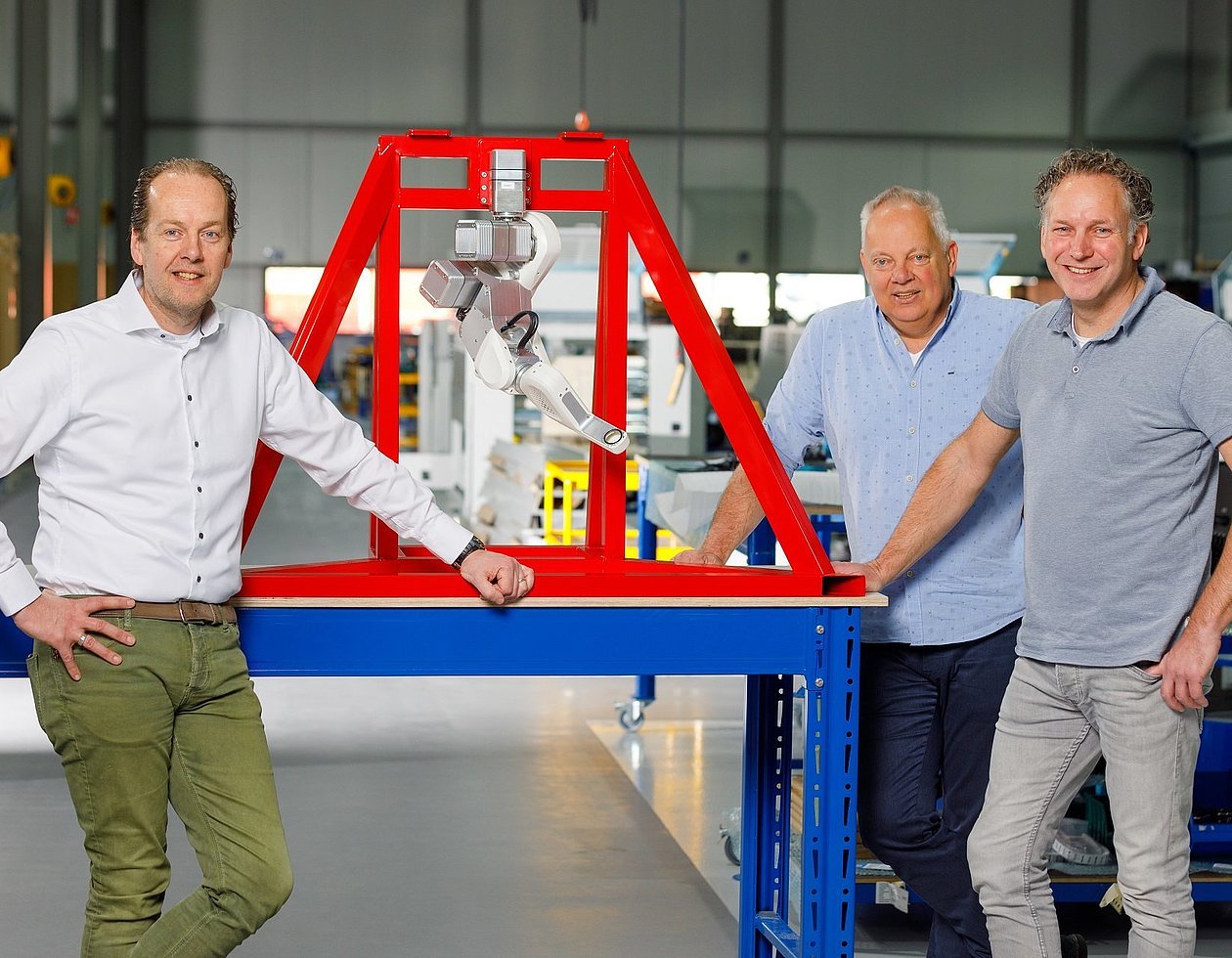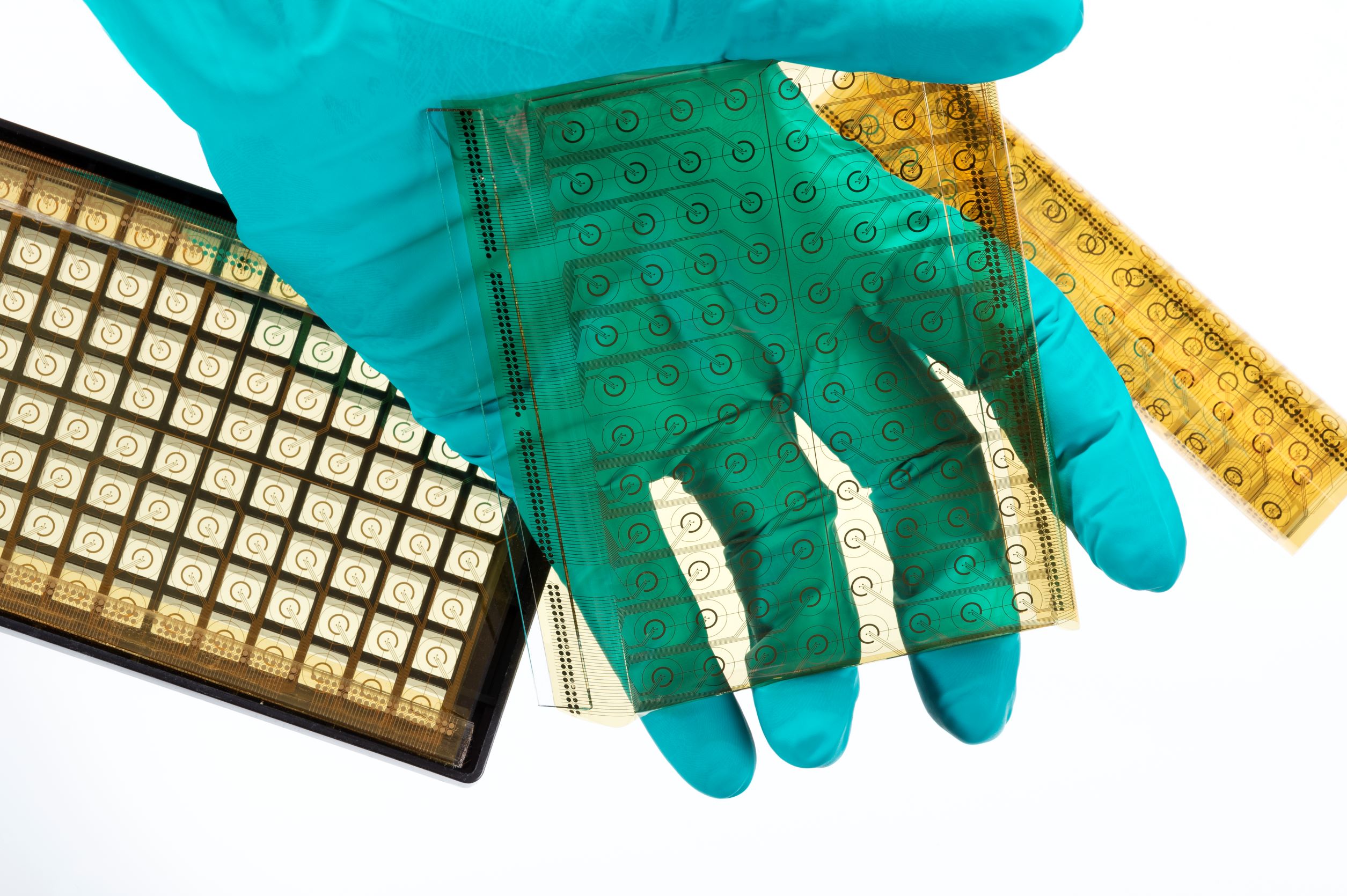
In recent decades, Patrick Geerts has seen innovative tech start-ups pop up like mushrooms. However, he also saw that relatively few of these have managed to grow enough to become leading global players. “In Brainport, there is an incredible amount of talent, knowledge and experience, but there are very few real success stories of world champions,” says Geerts. “Companies in the region are good at developing high-tech systems. The problem is that a technical solution is frequently overly complex and comes with lots of insurance premiums, which cause problems further down the line in the business case. A large portion of the final costs of a robot can be determined early in the development process. The last thing a MedTech company wants is to go back to the design phase.”
Time to money
However, there are also other challenges. For example, new technology must be easy to integrate into the target market, easy to maintain and also produce in series. “Another important question is how to keep a firm grip on the time it takes before you can enter the market. Innovations happen fast and high-tech systems call for significant investments. The lower the risk and the faster an innovation can enter the market, the greater the chance of success. All over the world, there are a lot of challenges that can be solved with high-tech solutions in the field of digitization and robotization, also in the medical domain, but then we have to be able to play this game well together with the customer,” says Geerts.
These observations and findings lead to MTA Helmond to switch its focus in 2017: in addition to manufacturing and building high-tech systems (Build to Print), the company is shifting its focus to overall mechatronic system development from scratch (Build to Sec). MTA has started to specialize in bringing together and integrating product and production design. By doing this, it aims to help new innovations to grow and become successful on the international market.
The V² model
MTA is doing this through the V² model, wherein product and production design are developed in parallel. In contrast to the V model, besides technical considerations, other factors are taken into account immediately.
When MTA began adopting the V² model in 2017, the founders thought about their market focus and how they could really make a difference with this model. Geerts: “V² is interesting for a lot of markets, but specifically for the MedTech sector. This sector is facing a major societal challenge: the world population is growing and getting older, so more and improved medical care is needed across the board.” Pressure on the availability of (specialized) personnel and costs are rising steeply. Digitalization, automation and robotization in particular have the potential to play an important role in this respect. As a result, lots of companies from this sector come knocking on MTA’s door.
“V² is interesting for a lot of markets, but specifically for the MedTech sector. This sector is facing a major societal challenge: the world population is growing and getting older, so more and improved medical care is needed across the board.”
Patrick Geerts, managing director en eigenaar MTA Helmond
Co-creation
This way of working does not mean that companies will abandon taking on an order and come back a year later to see how far along MTA is, stresses product architect Sjaak Janssen. “We seek co-creation with our clients, rather than the classic supplier-client relationship. MTA is not the party that has knowledge of the process or application or what is used and all the critical details that may be involved. We have knowledge in the field of robotics and industrialization.”
In other words, clients focus on the beginning and end of the process – research, sales and after-sales service – and MTA takes on the bit in between – development and series production.
New way of cooperating
On the technical side, the client contributes knowledge about the application and process by providing a CRS (Customer Requirement Specification). MTA translates those requirements into an SRS (System Requirement Specification) and an SVS (System Validation Specification). According to founder Geerts, it is precisely in this co-creation that the greatest challenge lies. “You have to do it together and be able, willing and courageous enough to share everything with each other, otherwise it won’t work.”
It is the new way of cooperating, according to system architect Richard van Lieshout: “ASML is so successful that everyone there has learned to speak the same language. The smaller companies don’t have everything in house, so they have to rely on the network – the ecosystem – to get what they need. But then all those parties have to speak the same language. That really is a challenge.”
On top of that, trajectories that medical robots have to go through are often very lengthy, Janssen adds. “The lead time from development to series production for these applications is often very long, due to all the clinical tests and approvals that are required. It can take three to four years before we can start series production. This also means the risks are higher. That took some getting used to, but we bridge that period of uncertainty by staying close to the client and keeping track of the processes.”

‘Asking a lot of questions’
In this kind of cooperation, it is essential that all the requirements of a system are deconstructed very precisely: MTA wants to know from clients in detail what a system must be able to do. For example, there are countless aspects that are not obvious from specifications on paper. “Asking a lot of questions” is, according to Van Lieshout, the only way to find out what all the requirements for a robot actually are.
As an example, the system architect points out that robots for medical applications must be exceptionally clean. A normal robot has all kinds of nooks and crannies, but this does not meet the hygiene standard for a medical robot. Apart from that, ergonomic aspects are also extremely important, because the system interacts with people (the patient), and it has to also be compatible with the existing workflow, surgical techniques and equipment of clinicians. ” There really is a lot more to MedTech robots than just working quickly and accurately,” Van Lieshout notes.
More success stories
That more innovations are able to continue to grow and reach the international market is something Geerts sees as crucial for the MedTech chain in Brainport. “In Brainport, we have all the ingredients to be a global leader in the field of medtech. We are good at systems thinking and can oversee and understand the entire chain. There is mostly no need to develop a new application area, much of the technology is already available.”
What is lacking, according to Geerts, is a more integrated approach to collaboration and system development that is aligned with the business case of the client and its market, creating the necessary investment climate, and organizing and directing the entire chain. “That’s why it’s good that the region is producing more success stories. And that’s exactly what we want to contribute to: getting more companies to grow, so that we can strengthen continuity in the Brainport region.”

